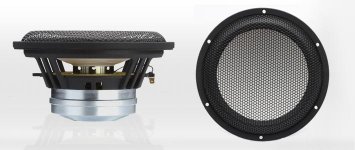I bought recently a pair of Beyma 12p80nd, and combine it with Beyma TPL150. Based on information from a site in norway, i was expecting specially excellent lower midrange:
Quote:
HiFiForum.nu - Beyma TPL-150H ihop med vadå...?
Petty speaks wise words. , I would say 12P80Nd (note not "Fe"!). they are wonderfully efficient and ultra dynamic elements. I've never heard anything like in the case of transients and "cut" in the sound. Nd-magnets have a much greater magnetic stability, and in the case 12P80Nd so is their pole pieces very well saturated and very stable and resistant to eddy-currents on stuff . Due to its ultra-strong magnetic system will answer them very nicely on the current drive, which probably can get them than a little djeafligare in terms of impulse response and dynamics. They sound also very neutral (to be effective) and correct. They are unique elements simply. Regards John.
Beyma Tpl-150 - Page 5 - Audio Voice Acoustics
I have had time to play around with the new 12orna, . They are not even an iota of recorded yet, does not go nearly as deep as the 12P1000Ndsom sat in the same boxes two days ago. But what comes out! This is the most transient I've ever heard, with a resolution and with a tone that is purely amazing, I have not even heard a field coil element with the poise and sense of effortless at the base and the naturalness of voices and foundations in guitars and so on. I definitely think that anyone thinking of a little more TH or maybe kvartsvågspipor, or perhaps real horns, should include these elements in their thoughts. Then they can man be the foundation for a new model, a "supermoc" perhaps? TPL treble in originalmocarna included waveguide now, which enhance the sensitivity of 102dB, we need, then just find a nice 24 "or maybe 30" to the bottom? Ingvar
Cord Children: Yes, it's a horrible fear of driving to work in the morning. Mathias! After a few days of listening, I think: the resolution, just like the version without the horns, incredible, välinspelade strings and percussion is ridiculous live and recordings that feels a little loud will be nicer then the element is completely free from ringing. Really bad recordings are however quite olyssningsbara when the treble is extremely revealing. Some boards feel a little # 8221, call # 8221; in the sound, probably due to the extremely low distortion, a compression driver is of course much higher 1st and 2nd harmonic distortion which adds some warmth and softness that are typically very pleasant to listen to. The combination QW-1 and the treble is really fun to listen to, now, are both basses to be recorded as well and they perform an amazing base and an addictive intimacy and life of the votes. Mathias: I have not really the plant, mocarna was too small, sometimes you could not find them if no music was played, it thus becomes larger versions, but there are advanced plans for a baby sister, mlk, (go ahead and guess! ) Hornta! Crossover 1200-1300, 2nd order LR, schedule is on PM, forgot to answer yours. Ingvar
It is my understanding that those guys have now swapped the 12P80ND for the Beyma Liberty 8, thinking it's the best midwoofer ever!
I'm just sayin..... 😉
vertical dispersion may be less important since you move less around in the vertical dimension than in the horizontal (e.g. when you have three listeners sit in a sofa, horizontal dispersion makes a clear difference whereas the horiziontal differences are are minor). Besides, given that ceiling and floor are usually closer to the listener than side walls, you are usually not interested in a wide dispersion in the vertical dimension.
Peter,
The issue with vertical dispersion is not poor coverage for listeners off-axis. It is about the sound reflected off ceilings and floor having a different power response or spectral content and energy, than the direct sound (and the reflections off sidewalls for that matter if horizontal directivity has been matched).
Now is that important? You tell me....
Mics Vs loudspeaker drivers.
Hi Tomtom,
I dont understand your question / statement :
" Cone doesnt need to be at different place at different time. Cone needs to be just on place where respective signal is. The different frequencies are superimposed one to another and your ear or mic membrane sees just positive or negative change in pressure. There is no multiple things at the same time. "
Re your question about microphones :
2 Key points to adress:
( 1) Mics are seperated into many individual groups/ frequency bands ie an orchestra can easily have 30 different mics. Even studio and small band / groups will have seperate mics ( and different types of mics) for lead vocals, backing vocals, drum kit percussion etc.
(2) Scale of voltage required.
Mics are very different beasts from cones. Mics are more like a stylus in a record groove than a speaker cone in the scale of operation ie Mic diaphrams are only moving a tiny amount compared to a speaker cone, the mic only needs to generate a tiny voltage ( like a stylus) which is then massivly amplified. A speaker cone has to generate magnitude(s) more voltage.
There is no similarity or common ground between the physics of a " mass on a spring " speaker cone and a studio microphone beyond the obvious common factor of use in a recording chain.
Cheers
Derek.
Hi Tomtom,
I dont understand your question / statement :
" Cone doesnt need to be at different place at different time. Cone needs to be just on place where respective signal is. The different frequencies are superimposed one to another and your ear or mic membrane sees just positive or negative change in pressure. There is no multiple things at the same time. "
Re your question about microphones :
2 Key points to adress:
( 1) Mics are seperated into many individual groups/ frequency bands ie an orchestra can easily have 30 different mics. Even studio and small band / groups will have seperate mics ( and different types of mics) for lead vocals, backing vocals, drum kit percussion etc.
(2) Scale of voltage required.
Mics are very different beasts from cones. Mics are more like a stylus in a record groove than a speaker cone in the scale of operation ie Mic diaphrams are only moving a tiny amount compared to a speaker cone, the mic only needs to generate a tiny voltage ( like a stylus) which is then massivly amplified. A speaker cone has to generate magnitude(s) more voltage.
There is no similarity or common ground between the physics of a " mass on a spring " speaker cone and a studio microphone beyond the obvious common factor of use in a recording chain.
Cheers
Derek.
My opinion:A mass suspended on a spring will oscillate when set in motion / energised. It will have a natural resonance and settling time.
Its mass, frictional losses / suspension stiffness and motor strength will dictate just how long and how far it bounces around its " centre point" and how long it takes to settle.
The 12P80Nd is one of the best in this regard. Qes is a useful indicator. The trouble with low Qms is that mechanical damping is unlikely to be linear. The voicecoil makes up almost all the Mms of the 12P80Nd. Motor strength has more influence over Qes than Mms does. I used to be anti stiffness but am now of the view that it improves disturbance rejection. I have made motion feedback subwoofer control systems with up to 5x correcting force. But that is a lot of effort. IMO the low Qes drivers such as the 12P80Nd are not bad at all.
Derek, it would be interesting to know your opinions about bass reflex. I have encountered so many people who talk sense but don't see any problems with bass reflex.
I am also interested in RayCtech's driver.
Hi RayCtech,
At last someone who agrees with me about the elephant in the room!
I have posted a lot about this problem for over 10 years and most forum members think I am mad or stupid (or both !) when I talk about the fundamental problems of conventional cone / dome / ribbons etc.
A mass suspended on a spring will oscillate when set in motion / energised. It will have a natural resonance and settling time.
Its mass, frictional losses / suspension stiffness and motor strength will dictate just how long and how far it bounces around its " centre point" and how long it takes to settle.
Please can you tell me more about your own drivers design and how you have solved the problem?
Thanks in advance and all the best
Derek.
Hi Derek,
Magnet system, cone, surround, dustcap, voicecoil ++ have been engineered as I wanted and I avoided all "common knowledge" including apps and tools. Production tools have been made and paid for the cone, surround, dustcap and voicecoils, and magnet systems CNCed etc.
I have used magnetic oil to center the voicecoil, but discovered recently that I possibly can make a version without magnetic oil with a "minimalistic spider" thats only mission are to center the voicecoil.
Depending on the used voicecoil the xmax (peak to peak) are either 30 mm or 35 mm.
The linear xmax (underhung (24 mm magnet gap)) are either 14 mm or 18 mm.
The surround (pure silk) are designed such as it have close to zero frictional losses, stiffness and mass in a 12 to 14 mm movement area, and have a increasing frictional loss from 12 mm up to 35 mm where it limits the cone movements.
Playing at normal SPL levels results in cone movements that are minimal (1 to 2 mm) and only some few recordings have low frequency informations / pulses that creates movements bigger than the 12 mm super linear area...
With three 8" drivers in OB the -3dB low frequency corner are in the area 8 Hz to 30 Hz depending on the magnetic oil viscosity used (8 Hz with no oil).
A new set with the "minimalistic spider" and no magnetic oil will be assembled this summer and if that version are successful some evaluation units could be made...
I use a AMT in waveguide between 500Hz and 15kHz, and a AMT super tweeter in waveguide above 15kHz - all with a 6dB/oct serial filter.
hi Raymond
have you give up bass amt ?
Not at all 😎
The 8" drivers was designed previous to the AMTs and if the new "minimalistic spider" design works as intended - then I can regard the 8" drivers designs (there are multiple versions) as finished. The magnetic oil versions works, but it sounds much better without, and even if the magnet system are ventilated and designed for use with magnetic oil there was no variants of the magnetic oil that really worked with 30mm cone movements... I have a "test" program for bass driver breakin that works in the 5Hz to 60Hz area and forces continuous 30mm full speed movements.. Even if this is not a real life usage the magnetic oil mixture that stays in the gap under these conditions causes to much damping of the cone movements for my preferences 🙂
The Bass AMT project will be finished as soon at the 8" drivers are revised and my DAC projects are finished.
Driver design
Hi Ray,
Thanks for your detailed reply, your designs sound very interesting and congratulations on taking the road less travelled, always a tough choice!
I look forward to some tasty discussions in the future, I am sure you are on to a winner with your designs. I am a willing Beta Tester by the way....!!
Hi John C,
Yes low Mms / High Bl drivers with linnen surrounds are the best bet, they are the lesser of two evils when compared to the heavy coned / rubber surround options ( with or with out high Bl). I have used Beyma, Volt, Precision Devices and PHL drivers because of their low Mms to moving mass and stiff linnen / cotton surrounds. The higher Fs is the only slight problem and well worth the effort to design arround.
I have always felt that a major re-think of driver design is what is needed and now that Ray is up and running things could get a whole lot better soon.
All the best
Derek.
Hi Ray,
Thanks for your detailed reply, your designs sound very interesting and congratulations on taking the road less travelled, always a tough choice!
I look forward to some tasty discussions in the future, I am sure you are on to a winner with your designs. I am a willing Beta Tester by the way....!!
Hi John C,
Yes low Mms / High Bl drivers with linnen surrounds are the best bet, they are the lesser of two evils when compared to the heavy coned / rubber surround options ( with or with out high Bl). I have used Beyma, Volt, Precision Devices and PHL drivers because of their low Mms to moving mass and stiff linnen / cotton surrounds. The higher Fs is the only slight problem and well worth the effort to design arround.
I have always felt that a major re-think of driver design is what is needed and now that Ray is up and running things could get a whole lot better soon.
All the best
Derek.
Hi Ray,
Thanks for your detailed reply, your designs sound very interesting and congratulations on taking the road less travelled, always a tough choice!
I look forward to some tasty discussions in the future, I am sure you are on to a winner with your designs. I am a willing Beta Tester by the way....!!
Hi John C,
Yes low Mms / High Bl drivers with linnen surrounds are the best bet, they are the lesser of two evils when compared to the heavy coned / rubber surround options ( with or with out high Bl). I have used Beyma, Volt, Precision Devices and PHL drivers because of their low Mms to moving mass and stiff linnen / cotton surrounds. The higher Fs is the only slight problem and well worth the effort to design arround.
I have always felt that a major re-think of driver design is what is needed and now that Ray is up and running things could get a whole lot better soon.
All the best
Derek.
Hi Derek,
560 gram N52 Neodym magnet, pure silk surround and at total mass of 8 gram for the version with single layer cone and -3dB at 10kHz without breakups...
The 8 gram includes the whole surround and the complete (not cut and terminated) wiring so the moving mass are actually a bit lower, and the size are closer to a 9" due to I have not used standard measurements. I discovered to late that this added extra cost as an example when the voice coils was made a special sized tool was needed because I was off standard..
For low frequency I have one version with dual layer cone that have a total mass of 22 gram.
It is refreshing to know that there are people such as Ray in existence. It is one thing to have ideas and think how things should be done. But to implement these ideas is really impressive.
A little more speaker OT 🙂
The new ceramic cone Accuton NdFeB midbass and small bass speaker have an interesting motor. There are inductance reducing shorting rings on the pole piece. Titanium is used for the voice coil former. A paper cone version would be interesting. Probably what I would build.
Attached a few T/S parameters for 8" speakers. I have the Tang Band W8-1808 in a 50" tall MLTL in our bedroom. I have a few dream T/S specs for an 8" midbass that can cover 80-1400Hz... probably with a phase plug... never with a whizzer. The polar response for an 8" above ~1400 does not fit "my plan" for smooth controlled directivity functions.
The new ceramic cone Accuton NdFeB midbass and small bass speaker have an interesting motor. There are inductance reducing shorting rings on the pole piece. Titanium is used for the voice coil former. A paper cone version would be interesting. Probably what I would build.
Attached a few T/S parameters for 8" speakers. I have the Tang Band W8-1808 in a 50" tall MLTL in our bedroom. I have a few dream T/S specs for an 8" midbass that can cover 80-1400Hz... probably with a phase plug... never with a whizzer. The polar response for an 8" above ~1400 does not fit "my plan" for smooth controlled directivity functions.
Attachments
Other nice 8 inch drivers
Hi LineSource,
Nice table of dream team there!
The 80Hz to 1,600Hz / 1,800Hz band is soooo tough to get right. With the Beyma TPL covering the top you need something specialto match it below crossover. I agree, 8 inch drivers are the best all round compromise to cover this frequency band.
http://www.phlaudio.com/datasheets/20_pdf/2520_2530.pdf
and
http://www.phlaudio.com/datasheets/20_pdf/2460.pdf
are all great sounding drivers, expensive but really worth the money, they sound so alive and natural and all PHL are bullet proof build quality.
Check out the Mms to Bl ratio....Wow, the 8 inch dedicated mids are unique pieces of engineering.
Raymond,
Your driver designs really are facinating...! Looking forward to hearing more and happy to help in any way I can.
All the best
Derek.
Hi LineSource,
Nice table of dream team there!
The 80Hz to 1,600Hz / 1,800Hz band is soooo tough to get right. With the Beyma TPL covering the top you need something specialto match it below crossover. I agree, 8 inch drivers are the best all round compromise to cover this frequency band.
http://www.phlaudio.com/datasheets/20_pdf/2520_2530.pdf
and
http://www.phlaudio.com/datasheets/20_pdf/2460.pdf
are all great sounding drivers, expensive but really worth the money, they sound so alive and natural and all PHL are bullet proof build quality.
Check out the Mms to Bl ratio....Wow, the 8 inch dedicated mids are unique pieces of engineering.
Raymond,
Your driver designs really are facinating...! Looking forward to hearing more and happy to help in any way I can.
All the best
Derek.
We have found our pair to be best crossed above closer to 2KHz with at least 24dB/oct. I will be experimenting with ours soon to try to mod it to be able to run the Xover lower. I am thinking removal of the hard felt glued directly to the rear of the driver and using a larger rear chamber stuffed with bonded logic, but all ideas need measuring and listening tests.
Has any progress been made? I'm wondering between letting the TPL just leak into the main cabinet or to make a bigger (a little/a lot?) separate damped box for it to replace the original?
Has any progress been made? I'm wondering between letting the TPL just leak into the main cabinet or to make a bigger (a little/a lot?) separate damped box for it to replace the original?
Sorry, nothing yet. Still working on the smaller monitors. I would NOT just remove the back and let it share the space with a woofer.
Greg
hi Raymond
what is bothering, is not the 2 - 6 khz range, but clearly the upper treble , which is overly bright. Also something that i can tam with minidsp, which has a room correction plugin, and other features. What i imagine is
a 3 way system, using a sub up to 80hz, 12p80nd from 80hz to 1200hz, a TPL150, and eventually above a second sub bass, in a vertical array, multi amp , using my Classé DR3b for bass, and two tube amps for lower midrange, and midtreble........🙂
There are so many designs, where is a big mismatch of dispersion between the different speakers. See all these horn speaker designs, where the bass is a direct radiator, and above comes a round tractrix or LeCleac'h horn. The bass has wide dispersion, while the horn has a much more narrow dispersion. Many do not have any issue with it......
I really became aware of this, when i changed from the big lower midrange horn in combination with Beyma TPL-150, to 12p80nd , in combination with Beyma TPL-150. The lower midrange horn has a rather narrow dispersion, which does not match with the TPL-150, which has a wide horizontal dispersion. When i switched to 12p80nd in combination with TPL-150, suddenly the dispersion became almost identical, and that has been one of the reasons the 12p80nd combines and sounds much better than the combo with the lower midrange horn. I have also no issue with clarity of the 12p80nd in the crossover range, it sounds very open, precise, and clear. I don't miss anything. And i have no problem with the TPL-150 being crossed at 1,2khz. I don't hear any harshness . It sounds very smooth. I would wonder if the Acoustic Elegance 12" speaker has such a fantastic lower midrange as the 12p80nd. If so, and also good low bass, than that could be a great match as well for a 2 way design.
angelo, you are wrong in several points. first your horn system you are giving on up the moment obviously didn't care about matching radiation patterns around crossover frequencies so you're generalizing about every horn/direct radiator system. on contrary - if you do things properly, like in gedlee summa where x-over frequency is carefully chosen so the patterns of 15" direct radiator bass and 15" CDWG are matched, you can get terrific results - as good as any. i had this speaker in my room for two years and this 2-way has certainly the best integration and best dispersion as a system you can get.
second, the harshness you hear from TPL in upper spectrum is clearly a consequence of crossing it very low. in that case, you need to cut it off under 10k and add a supertweeter. so choose a poison - running it wide to the point of stress/harshness or lift the x-over frequency closer to 2k. it ain't an easy decision and TPL ain't a perfect driver, whatever we hoped for.
angelo, you are wrong in several points. first your horn system you are giving on up the moment obviously didn't care about matching radiation patterns around crossover frequencies
correct. That was the case for the combo tpl-150 / lower midrange horn.
When all channels were horns, i had a other problem : very narrow directivity. Specially in the midrange / treble. I could just shake my head at listening position, and the whole listening image changed. that bothered me.
so you're generalizing about every horn/direct radiator system.
Yes, it was a generalisation.
on contrary - if you do things properly, like in gedlee summa where x-over frequency is carefully chosen so the patterns of 15" direct radiator bass and 15" CDWG are matched, you can get terrific results - as good as any. i had this speaker in my room for two years and this 2-way has certainly the best integration and best dispersion as a system you can get.
I don't doubt about that. But you have to agree as well, that many neglect the importance of dispersion matching, as i did. Look at the systems, where a tractrix horn is crossed at 500 / 600hz, or even lower, to a direct radiator. That cannot match.
second, the harshness you hear from TPL in upper spectrum is clearly a consequence of crossing it very low.
No, its not. The differences appear with amp switching.
With the Viva Solista, i had too shy treble.
With the Hiraga, it was just perfect.
With the Classé DR3b, i have harshness, as many atribute to SS amps.
So far, i don't agree that cross the TPL below ~1,8khz adds harshness. Others can experience that. I don't .
Last edited:
So far, i don't agree that cross the TPL below ~1,8khz adds harshness. Others can experience that. I don't .
Hi Angelo,
I've noticed that some people regard the TPL as harsh below 1.8kHz while others don't. I can't help wondering whether this has anything to do with the removal of the felt on the back of the driver.
With the felt removed the fundamental resonance of the driver (at approximately 1.3kHz) is much more pronounced and poorly damped. It seems that the manufacturer regarded the felt as necessary for proper damping and accepted higher second harmonic distortion as a result.
Angelo, have you removed the felt on the back of the TPL?
Hi Angelo,
I've noticed that some people regard the TPL as harsh below 1.8kHz while others don't. I can't help wondering whether this has anything to do with the removal of the felt on the back of the driver.
With the felt removed the fundamental resonance of the driver (at approximately 1.3kHz) is much more pronounced and poorly damped. It seems that the manufacturer regarded the felt as necessary for proper damping and accepted higher second harmonic distortion as a result.
Angelo, have you removed the felt on the back of the TPL?
Yes, i have removed the felt/backcover. I like the improved spaciousness/deeper soundstage with dipole operation. I am really very satisfied with this combination. I also enjoy a lot how defined , precise and controlled the 12p80nd plays in the frequency region, where the " punch " is, ~ 80hz and 120hz. So i think its a must not to cross it above than lets say 80hz.
Last edited:
Today i hooked up for the first time the Line Magnetic 555 drivers.
I did not listen music, first, but made a few measurements.
of the 12p80nd, without crossover, at 0, 45, and 90 degrees, at 1m mic distance, and the LM555, crossed at 150hz, and 1,2khz first order, also at 0, 45, and 90 degrees, also at 1m distance.
here it goes:
12p80nd 0 degrees, 1m distance :
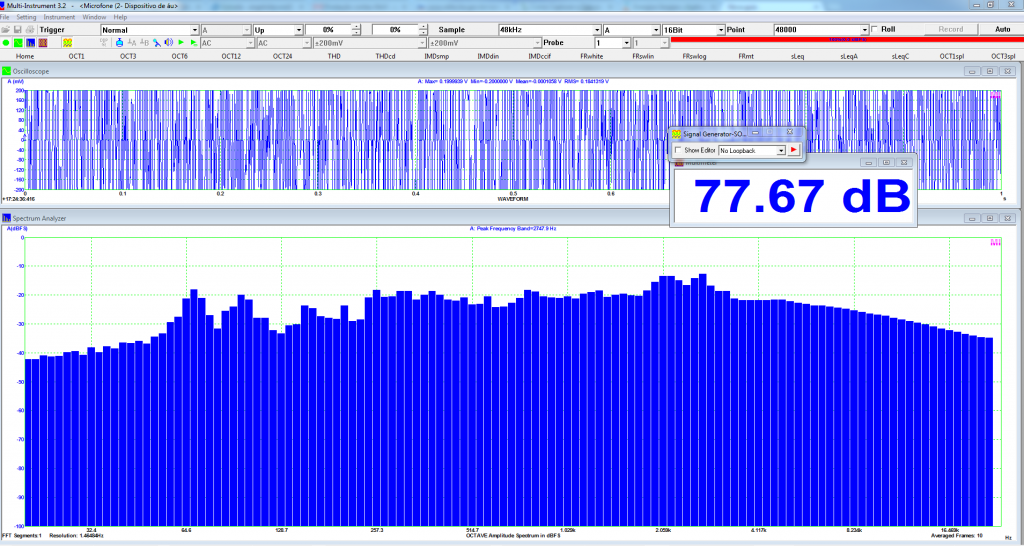
12p80nd 45 degrees, 1m distance :

12p80nd 90 degrees, 1m distance :

Line Magnetic 555, 0 degrees, 1m distance :
what is remarkable, that it goes down to 130hz.....
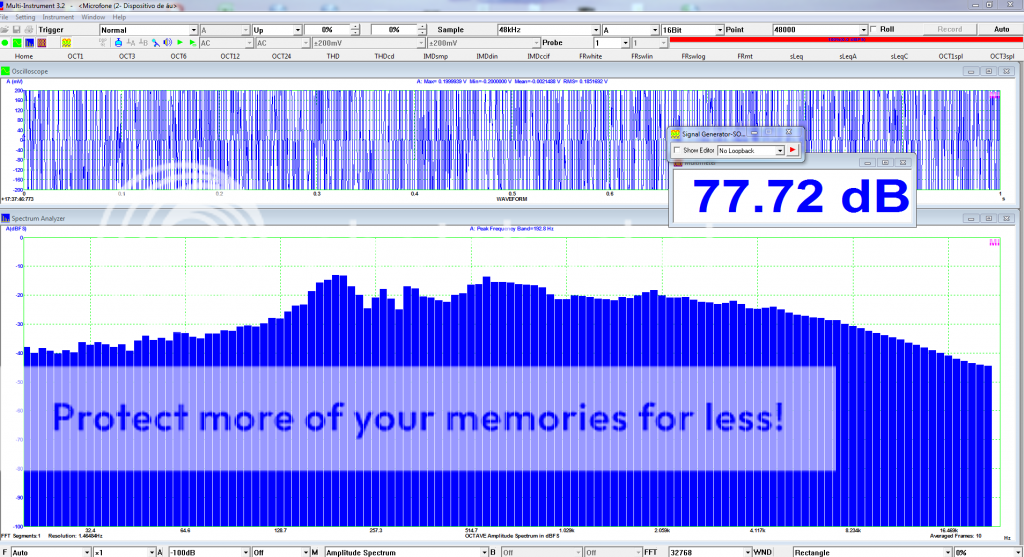
Line Magnetic 555, 45 degrees, 1m distance :
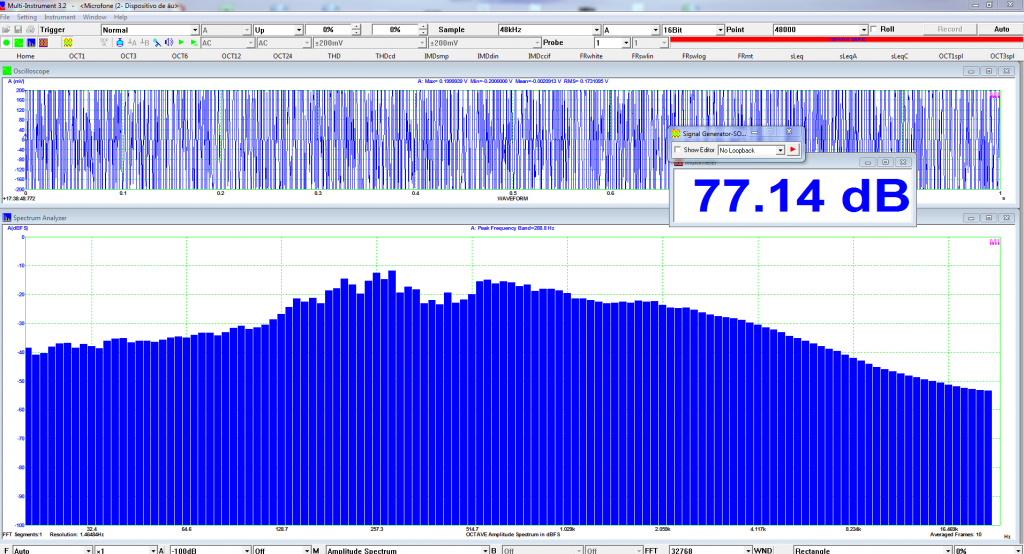
Line Magnetic 555, 90 degrees, 1m distance :
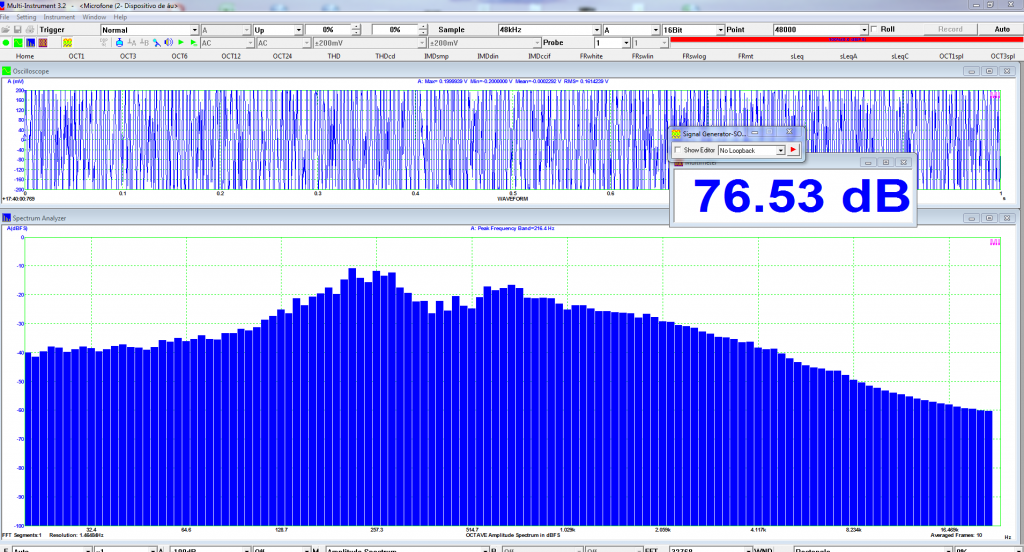
I did not listen music, first, but made a few measurements.
of the 12p80nd, without crossover, at 0, 45, and 90 degrees, at 1m mic distance, and the LM555, crossed at 150hz, and 1,2khz first order, also at 0, 45, and 90 degrees, also at 1m distance.
here it goes:
12p80nd 0 degrees, 1m distance :

12p80nd 45 degrees, 1m distance :

12p80nd 90 degrees, 1m distance :

Line Magnetic 555, 0 degrees, 1m distance :
what is remarkable, that it goes down to 130hz.....

Line Magnetic 555, 45 degrees, 1m distance :

Line Magnetic 555, 90 degrees, 1m distance :

Last edited:
- Home
- Loudspeakers
- Multi-Way
- Beyma 12P80ND + TPL-150
